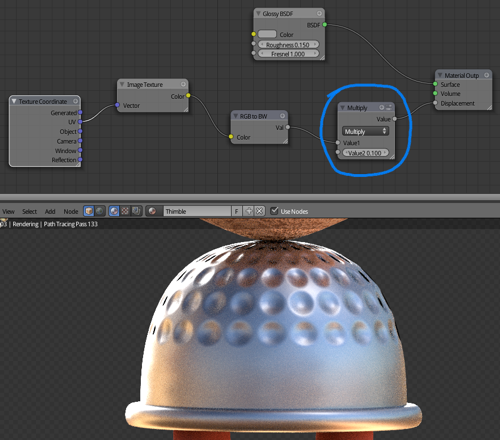
If the thing in question refers to a colour, it should be an appropriate colour based transform. I believe this is a duplicate, but likely bears answering. So that, if you set the color space in one material, this will affect all the others that are using the same texture. When using an image texture node, the color space information is given by or set to the image texture itself. It is commented as 'Log based filmic shaper with 16.5 stops of latitude, and 25 stops of dynamic range'.Ī link to OCIO configuration in the Blender repository. 709 (Full Range) and is commented as 'Blender native linear space'.Īgain please refer to this answer. The configuration is linear (as said in it name) and is done from a table giving parameters of this operation for each color channel.Ĭorrespond to Rec. The comment in config.ocio says "color space used for images which contains non-color data (i,e, normal maps)". But it is semantically different as it is for things we know to be 'non color'. This is similar to 'raw' from the calculation point of view. 'Raw' is the image encoded data as it is.

It also has a transformation table defined in it.

Stands for Standard RGB and is the "default color space for byte image" as defined in 'config.ocio'. The response value for them is defined in the OCIO configuration. Transformations can be direct or reverse.Ĭoncretely, what about 'XYZ', 'sRGB', 'Raw', 'Non-color', 'Linear ACES', 'Linear' and 'Filmic-Log'?ĬIE XYZ is a calibration and its result is analogous to the LMS color space which corresponds to the cones response of the human eyes. The general principle of OCIO configuration seems to be giving a range to the input data and apply a transformation table to it. The best is to read this answer from troy_s to know more. Linear ACES is one of the possible option for the texture node.įilmic is another calibration approach. For image calibration it has been defined by Academy Color Encoding Specification (ACES). In this directory, we can find a file called 'config.ocio' (describing the possible configurations) and two subdirectories 'filmic' and 'lut' (containing data tables used by these configurations). And OCIO is based on a configuration that can be found in 'Your installation path\2.8\2.80\datafiles\colormanagement'. OpenColorIO is a set of libraries (programs) that are provided OCIO organisation and these libraries are open source.įrom that, when an image is processed (in our case for texture nodes) it is given to OCIO to do it. But more globally, OCIO can process image data transformation 'the way you want'. The main goal of OCIO is to allow to transform image data into device rendered image data which fits the best to human eyes perspective as (for instance) our perception of light intensity is not linear (so intensity can be coded or manipulated linearly, as it is, but rendered differently). maybe to allow Blender to run on some low level hardware?). This processor can be based on OCIO or be a 'fall back' one if OCIO is not present (I don't know why it could be absent.
#Blender 2.8 quick node code
I've dig a bit into Blender code and into OpenColorIO (OCIO) documentation and my ( very young and superficial) understanding is the following.īlender uses a processor component to handle image data. Use one of the others (depending on your needs) for what is effectively a color.Use "non-color" for inputs that are supposed to be spatial (3D) vectors or simple factor values.The color of the fireball determines the base damage that is taken and health that the user is granted. This weapon will heal 15 HP to the player with lowest health nearby. This weapon attacks using a unique lighting blast similar to the Wizard Boss's attack with a very high attack rate. This weapon, upon shooting an enemy, will heal the player who wielded it. This weapon deals the most raw damage out of all melee weapons. This weapon deals extremely high knockback to mobs. This weapon can be obtained by defeating any mobs while having Might of Fhanhorn effect. Any damage taken from mobs will be reduced by 60% if the player is holding the antler shield. This weapon can be obtained by defeating any mobs while having Might of Fhanhorn Effect. This is the only weapon players can unlock from Combat XP. This weapon deals very high knockback towards mobs and increases the drop chances of items from mobs by 20%.Īny damage taken from mobs will be reduced by 40% if the player is holding the maple shield.Įvery four hits dealt to a hostile mob inflicts the slowness effect, causing the attacked mob to become slow.

This weapon deals very high knockback and has a wide range. This weapon, after hitting an enemy or a player (without dealing any damage) a few (approximately 15) times, will start to increase its rate of attack from about 4 hits per second to 10 hits per second. This weapon deals the lowest damage of any weapon in the game.ĥ2 HP - 130 HP (max speed without crits)


 0 kommentar(er)
0 kommentar(er)
